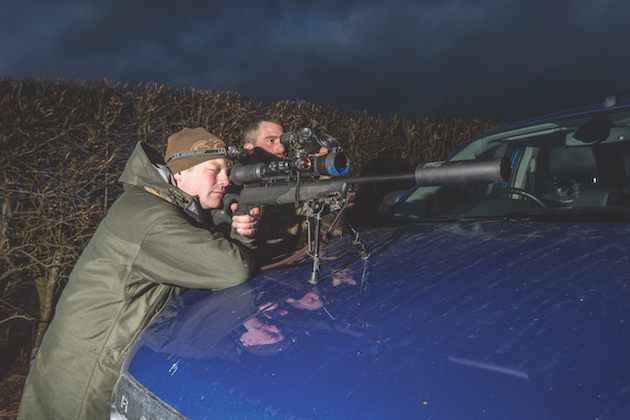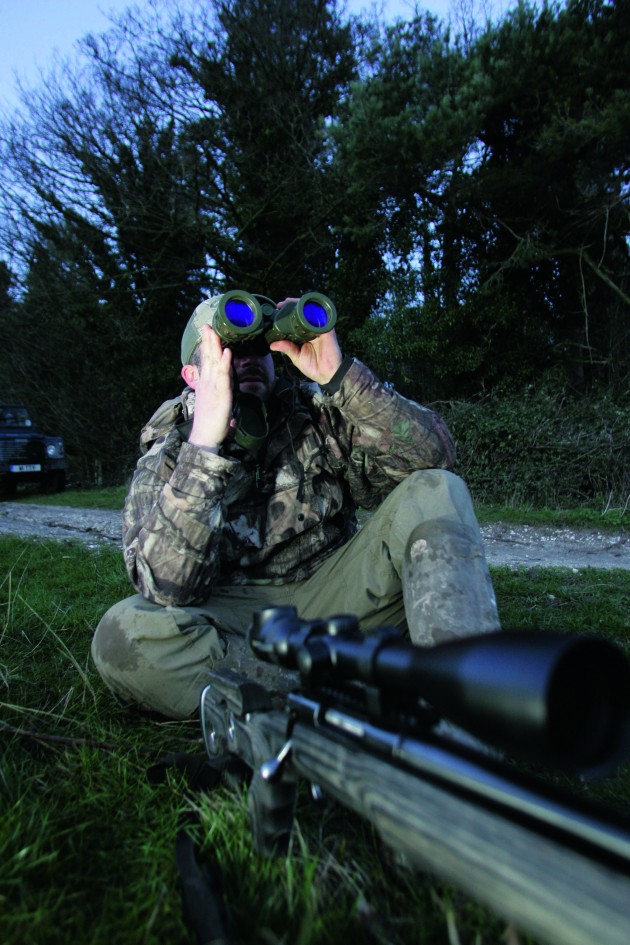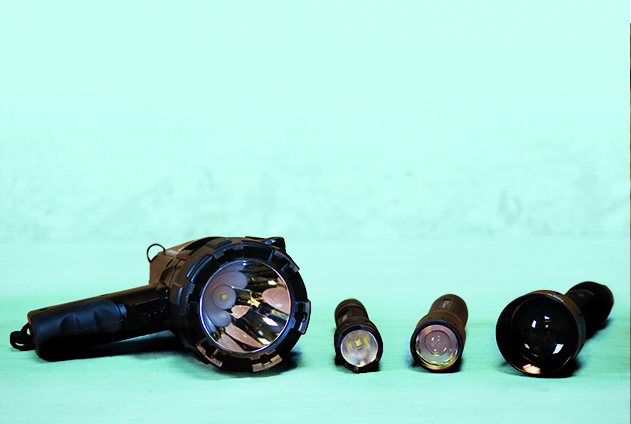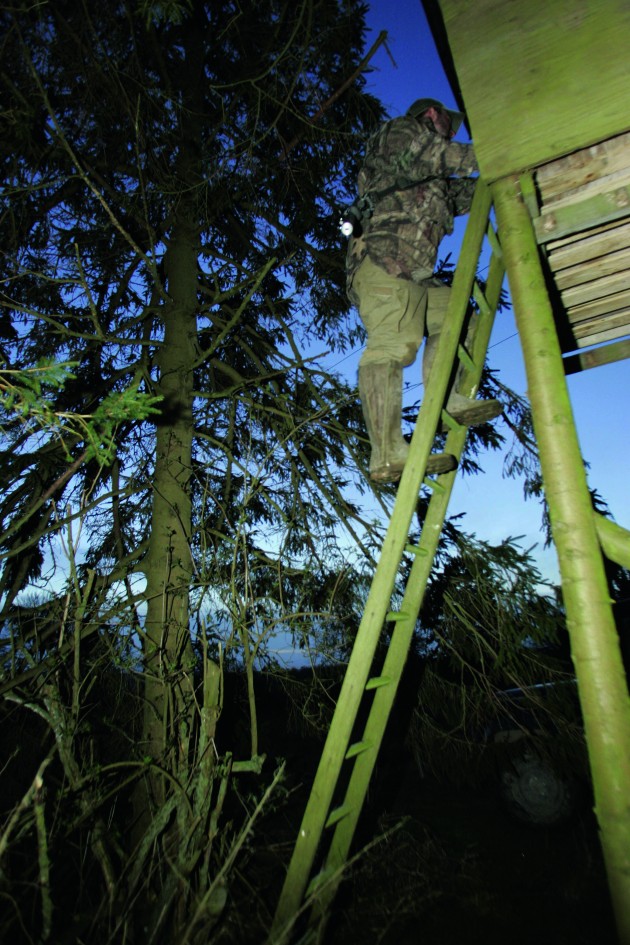5 tips for lamping foxes
Tim Weston highlights what you need to know about lamping foxes

Tim Weston heads out to shoot a fox
1. What’s the right time to go out lamping foxes?
- Foxes are generally nocturnal and see excellently at night.
- Wait until it is properly dark outside before setting off.
- During the night foxes will sleep for a while – usually from around midnight until 3am.

You should know the ground that you are going to lamp as well as you know your own house: this is important
Hunting lamps: we pick out the best around
The vast majority of us still rely on trusty hunting lamps to get the job done and ‘traditional’ lamping remains…
Is there a minimum recommended calibre for a foxing rifle?
Fox control: Why do all the rifle experts have such a low opinion of the .22 rimfire for fox control?…
How to control foxes when they’ve become lamp shy
Lamping may be one of the most efficient ways to kill foxes but if you miss then, you’ll have created…
Hunting lamps: we pick out the best around
The vast majority of us still rely on trusty hunting lamps to get the job done and ‘traditional’ lamping remains…
Is there a minimum recommended calibre for a foxing rifle?
Fox control: Why do all the rifle experts have such a low opinion of the .22 rimfire for fox control?…
How to control foxes when they’ve become lamp shy
Lamping may be one of the most efficient ways to kill foxes but if you miss then, you’ll have created…
2. Know the ground
Night shooting has some risks associated with it but follow the shooting safety rules and plan ahead to keep risks minimal.
- Know the ground on which you are going to lamp. Things look different at night and distances can be deceptive.
- Backstops, routes, buildings and footpaths should all be known to you before setting off. A good tip for helping to judge distances at night on arable fields is to know the width of the farm tramlines, which can give you an accurate distance to your intended target. At night this can be especially important; count the tramlines and you have your distance to the fox roughly in metres.
- Make sure that other estate or farm workers/users know that you are going out lamping. This is usually best done by telling the farm manager, keeper or owner — a simple text message is usually good enough but make sure it is acknowledged and read. Some police forces like lampers to inform them when they will be out, but there is no legal requirement to do this — it is entirely up to you.
3. Check the weather
Weather conditions can affect your lamping. Don’t just consider the immediate conditions — look at the previous weather. Heavy rain can make the ground slippery and muddy, making it too dangerous to drive around in the dark. Light rain, or rain from a couple of days ago, might mean that you will tear up the tramlines in the fields and make the farmer unhappy, which could mean the end of your lamping permission.
You could still go lamping foxes on foot or on an ATV, but both these options also have to be thought through in wet and muddy conditions. Accidents are more common in difficult terrain and poor weather.
If it is raining, it is tempting to stay indoors. That might be the better option, because lamps struggle to cut through rain and you’ll see more foxes out hunting on a nicer night in any case.
The best overall conditions seem to be dark and windy nights. The wind shouldn’t be a gale but just enough to mask the sound of the vehicle engine and the tyres running over stubble or tracks. If you can work your lamping trips around the moon cycle or heavy cloud cover that is ideal; the darker the night, the better.

Most lamping will be done from a 4×4 vehicle – but be mindful of wind direction and the noise of the motor
4. Choose a vehicle
Most lamping is done from inside or the back of a 4×4, UTV or ATV.
An ATV is good because it can access certain ground more easily than a bigger vehicle – however because they are single person the lamping and shooting has to be done alone. Having to move a lamp yourself, aim, hold steady and check for distance and a safe backstop is quite difficult.
If you are lamping from a vehicle, wind direction is more important than most think, especially if you are standing on the back of a pickup. A person’s scent will carry from the back of a truck to the surrounding countryside. The engine noise should also be considered. When you pick up a set of eyes and squeak, often the fox will try to quarter around you to get downwind. This is because foxes hunt with their ears, eyes and noses, especially the older dogs and vixens, so always consider this when you are choosing which direction to go around a field or up or down a track.
Also the driver will need to consider how they are going to manoeuvre the vehicle if a fox is spotted by the lamper. Getting the truck in the correct position will help make the shooter comfortable and, therefore, more accurate.
Thinking about how you will communicate within the team. Some people turn off lamps, other use red and green lights and switches fitted on the dashboard and roof of the truck. Make a plan beforehand and talk about it.
How to call a fox
HOW TO SQUEAK A FOX: Here the Nataional Gamekeepers Organisation tell you how to call in a fox.
How to use snares for fox control
How to use snares for fox control correctly and legally
What is the best rifle for shooting foxes?
What’s the best rifle for foxing? How should you choose?
5. Call them in
Knowing how to squeak a fox consistently is vital when you are out lamping foxes, especially during the late winter or early spring when there are only adult foxes about. Being able to imitate a hare in distress or a mouse and knowing which one to use is a real skill. If you are watching a fox and it is clearly mousing in the long grass, then trying to squeak him in with a hare call might not work. Don’t all squeak together, it will make the fox run for cover. Make sure that only one of you starts to squeak.
Most commercial electric calls are excellent and produce realistic sounds that would fool most foxes. However these are best deployed for the occasions when you want to ambush the fox. If you are good at producing a squeak from your hand on the vehicle, that is often the most convenient way.
















